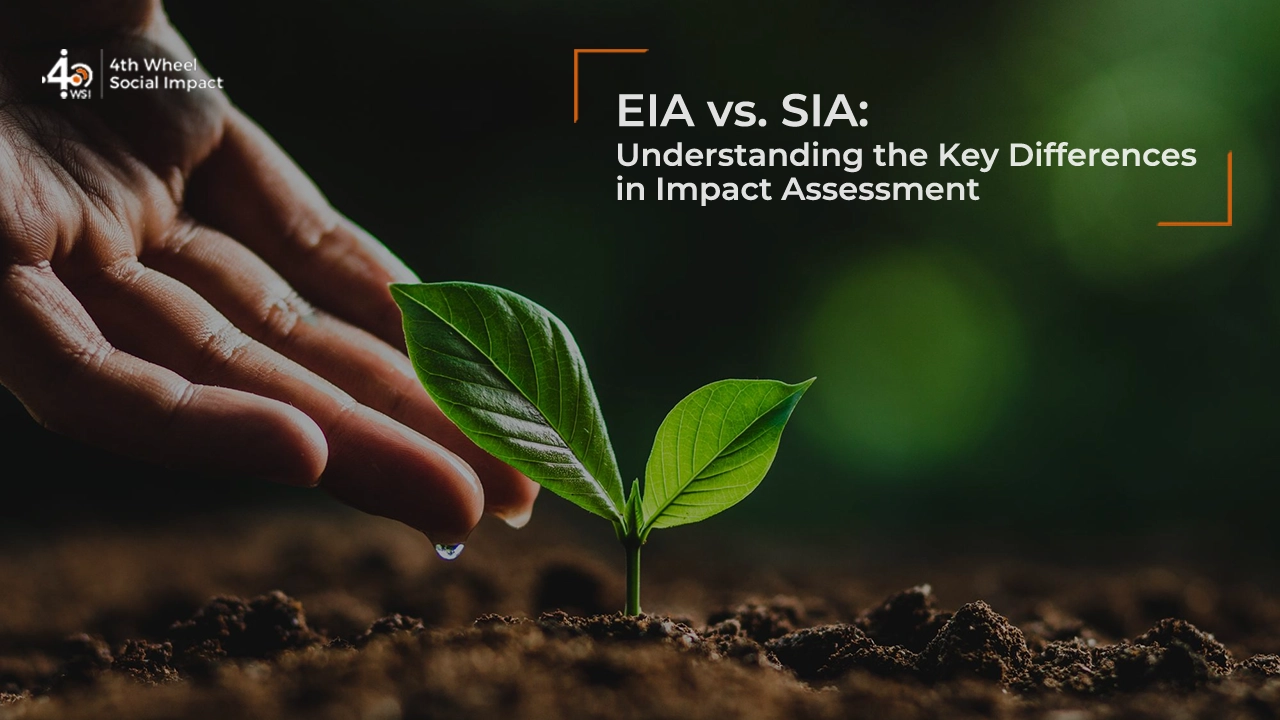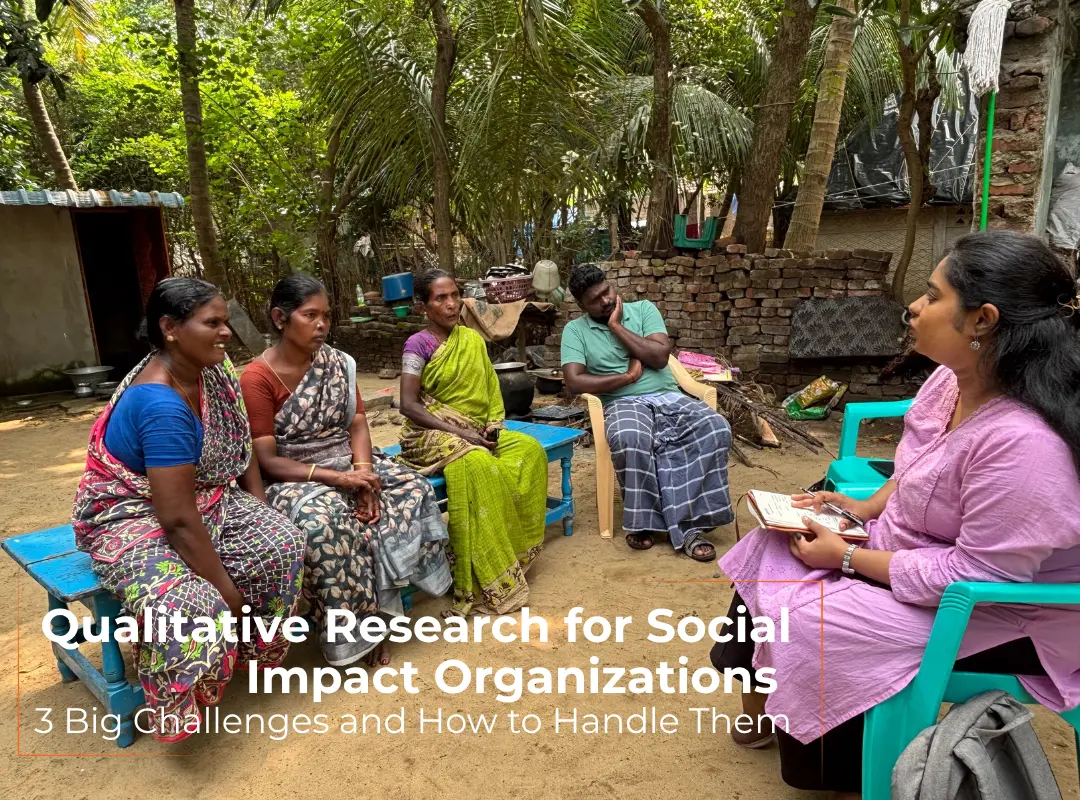Impact assessments are critical tools for planning projects responsibly. Before any major initiative begins, be it infrastructure, mining, industry, or social development, organisations must study potential effects on people and the environment. Two of the most widely used tools are Environmental Impact Assessment (EIA) and Social Impact Assessment (SIA). Understanding both helps ensure development is sustainable, inclusive, and accountable.
At 4th Wheel, we have extensive experience with different impact assessments. Our work as consultants involves applying both the EIA process and the SIA process to help organisations plan better, engage communities, and meet regulatory standards. By looking closely at EIA vs SIA, we can see where they differ, where they overlap, and why both matter in responsible decision-making.
What Is Environmental Impact Assessment (EIA)?

The EIA definition refers to the process of identifying and evaluating the potential environmental effects of a proposed project before it begins. The goal is to predict problems, reduce risks, and design solutions that protect ecosystems and natural resources.
The EIA process often includes:
- Screening to decide if a project needs a full assessment.
- Scope to identify key environmental issues.
- Baseline studies on air, water, soil, and biodiversity.
- Predicting and evaluating environmental impacts.
- Suggesting mitigation measures to reduce harm.
- Reporting and reviewing findings before project approval.
In practice, environmental impact assessment helps development projects avoid compromising the health of the environment. It provides decision-makers with reliable information so that growth happens without damaging ecosystems or future resources.
What Is Social Impact Assessment (SIA)?
The SIA definition is the process of identifying and evaluating the social effects of a proposed project. Unlike EIA, which focuses on natural systems, SIA looks at people, communities, and social structures to create positive social impact. It helps organisations understand how development may affect livelihoods, health, culture, and overall quality of life.
The SIA process usually includes:
- Stakeholder mapping and engagement.
- Studying community demographics and livelihoods.
- Identifying potential impacts on health, education, and housing.
- Predicting risks like displacement, inequality, or conflict.
- Proposing strategies for participation, inclusion, and mitigation.
Social impact assessment guides projects to respect human rights and community needs. By integrating community voices, SIA designs programs that are fairer, more transparent, and more likely to succeed in the long run.
Differences Between EIA & SIA
When planning projects, it helps to understand the difference between EIA and SIA. Both assessments predict impacts before a project begins, but their focus, process, and outcomes vary in important ways. Below is a detailed comparison of environmental vs social impact assessment.
| Aspect | Environmental Impact Assessment (EIA) | Social Impact Assessment (SIA) |
| Definition | Evaluates potential effects of a project on the environment. | Evaluates potential effects of a project on people and communities. |
| Focus | Air, water, soil, biodiversity, ecosystems, and natural resources. | Livelihoods, health, culture, displacement, and community well-being. |
| Process | Screening, scoping, baseline studies, predicting impacts, mitigation, reporting. | Stakeholder mapping, community studies, identifying risks, inclusion strategies, mitigation. |
| Stakeholders | Environmental scientists, regulators, developers, conservation experts. | Communities, NGOs, social scientists, local leaders, development agencies. |
| Outcome | Ensures projects reduce environmental harm and stay compliant with laws. | Ensures projects respect social rights, reduce risks, and support inclusion. |
| Timeframe | Often initiated early, may take months depending on scale of study. | Conducted alongside or after EIA, timelines vary based on social complexity. |
| Legal/Regulatory Framework | Backed by environmental laws, national policies, and global standards. | Guided by social safeguards, human rights frameworks, and development policies. |
Key Similarities Between EIA and SIA

While there are clear differences between the two, both assessments share common ground. Together, they form the backbone of environmental and social impact assessment, so projects are sustainable and inclusive.
- Preventive tools: Both are conducted before projects to predict risks and avoid harm.
- Structured processes: Each follows a systematic approach with defined steps and reporting.
- Stakeholder involvement: Communities, regulators, and experts play important roles in both.
- Decision support: Findings help policymakers, funders, and developers make informed choices.
- Focus on sustainability: Both assessments promote long-term environmental and social responsibility.
Also Read: 10 Key Benefits of Social Impact Assessment in 2025
Why EIA & SIA Are Important?
The EIA process and SIA process are more than regulatory requirements. They give decision-makers, communities, and businesses the tools to plan responsibly. Below are the main reasons why both matter in sustainable development.
1. Safeguarding the Environment
The environmental impact assessment helps protect natural resources from long-term damage. By identifying risks early, it creates opportunities to reduce pollution, conserve biodiversity, and preserve ecosystems. Without EIA, projects may meet short-term goals but leave irreversible harm for future generations. Protecting the environment is a shared responsibility for every stakeholder.
2. Protecting Communities
The importance of social impact assessment is focuses on people. It keeps projects from disrupting livelihoods, housing, or access to resources. SIA also studies health, education, and cultural impacts. This protects vulnerable groups and gives communities a voice in the development process. In this way, SIA reduces risks of conflict and displacement.
3. Supporting Better Decision-Making
Both EIA and SIA serve as decision-support tools. Findings guide policymakers, funders, and developers in shaping projects that are practical and sustainable. When leaders see both environmental and social risks clearly, they can adjust plans early. This prevents costly changes later and helps projects create long-term value.
4. Building Accountability and Trust
The difference between EIA and SIA lies in focus, but both create transparency. Public reports, stakeholder consultations, and open communication build trust between communities, governments, and businesses. Accountability strengthens relationships and helps projects receive public support, which is often critical for long-term success.
5. Aligning with Laws and Global Standards
Most countries require the EIA process by law, while the SIA process is tied to social safeguards and human rights frameworks. Together, they align projects with national regulations and international standards. Compliance not only avoids penalties but also builds credibility with investors, donors, and global development agencies.
6. Promoting Long-Term Sustainability
Both environmental vs social impact assessment aim to make development sustainable. EIA reduces harm to ecosystems, while SIA safeguards community well-being. When combined, they balance environmental protection with social progress. This integrated approach helps projects create value that lasts, supporting both current needs and future generations without compromising either.
Conclusion
Understanding the difference between EIA and SIA is essential for responsible development. While the EIA process protects natural systems, the SIA process safeguards communities. Together, they create a balanced approach to growth that values both environmental and social well-being.
For organisations, applying environmental and social impact assessment supports compliance, builds trust, and creates long-term value. At 4th Wheel, we provide expert guidance in impact assessments to help partners design projects that are sustainable and inclusive. Looking for expert guidance on impact assessments? Contact 4th Wheel today to get started.




